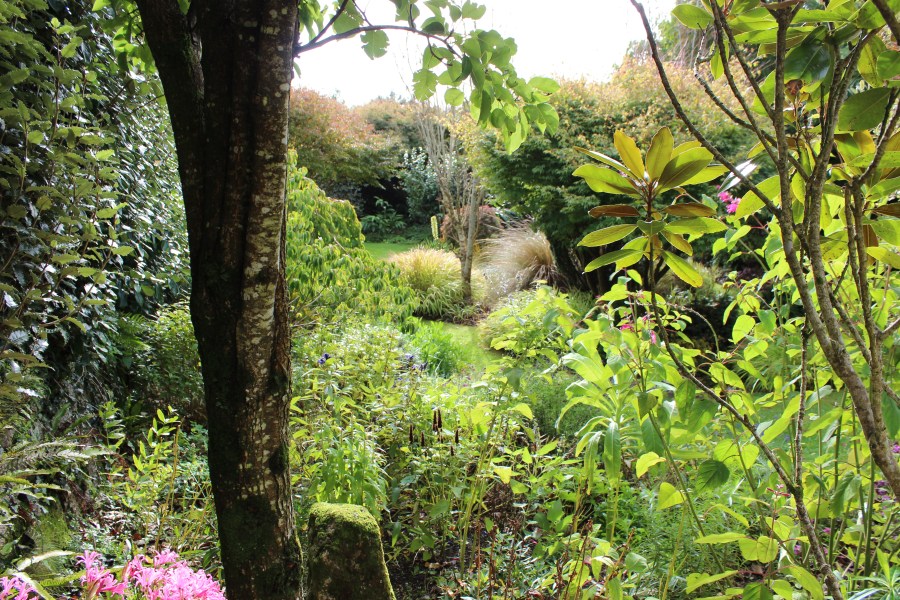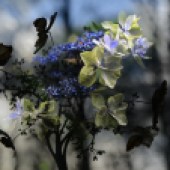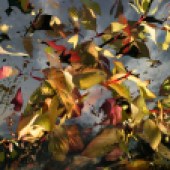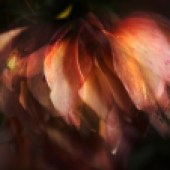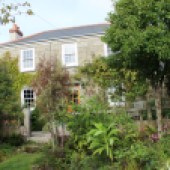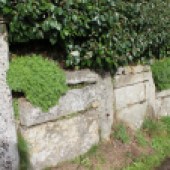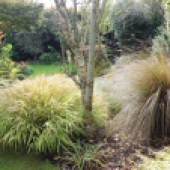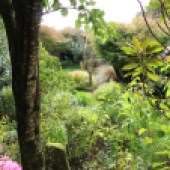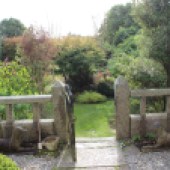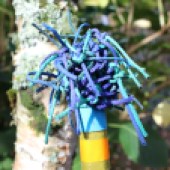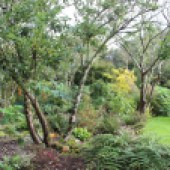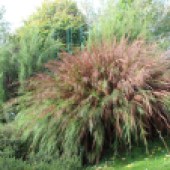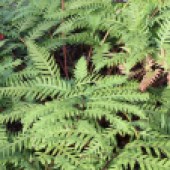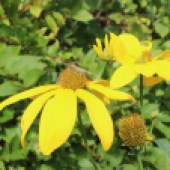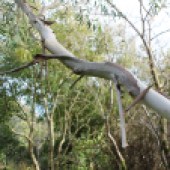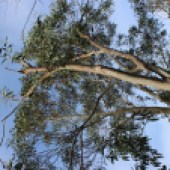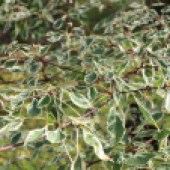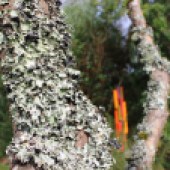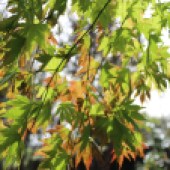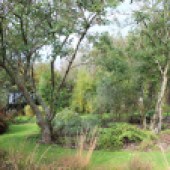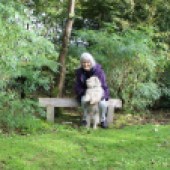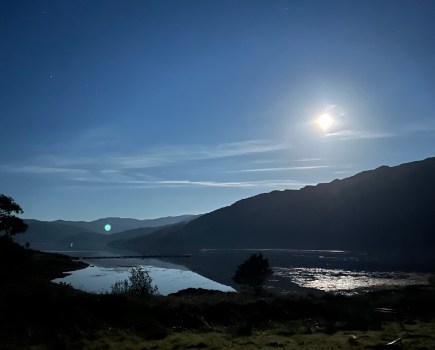Deborah Baker tells GILL HEAVENS how she discovered the photographic joys of her West Cornwall garden.
It is useful to have more than one string to your bow. Deborah Baker, who lives at Buckshead House on The Lizard peninsula, is blessed with two fine strands. Firstly, Deborah is an accomplished photographer, retired lecturer and art exhibitor. Secondly, she is a knowledgeable, brave and inventive gardener. When these two disciplines converged a little piece of magic was made.
Buckshead House was built around 1840, constructed from back-bending granite blocks, effectively protecting its inhabitants from exposure to the elements. It is situated a short walk from the village of Constantine and just five miles from Falmouth Bay. This handsome property is Grade II listed, the walls softened by wisteria and climbing hydrangea, and cradled in the arms of lush gardens. Deborah has lived here since 2003 but, then again, Deborah has lived here since 2019. All will make sense, I promise you!
Her first passion was photography, which she studied at Trent University. In her second year of study, she travelled to America as part of an exchange scheme. Impressed by her work, the distinguished American photographer Ralph Gibson offered her a job in New York. It was whilst working in the United States that she met and worked with many notable photographers of the age. However, she soon realised that something was wrong, the spark was missing. It was time to return home.
Once back in the UK, Deborah embarked on a diverse career in the photographic world including launching a gallery in Cardiff, picture editing and teaching in both Sheffield and London. Then a teaching post came up in Birmingham. Deborah moved to a house with a garden and her second passion was ignited and was quick to burn. When she was not teaching, she was consuming gardening encyclopaedias, eager to learn more. Before long she was on the move again. A job came up at Falmouth University and a barely affordable, but totally irresistible, Buckshead House was purchased. And it was time to rethink her gardening style.
Deborah had an ace up her sleeve. Mary Payne MBE, Chelsea Gold Medal winner and Master of horticulture, is her mother’s goddaughter. The first, and possibly most important piece of advice from Mary, was to plant a shelter belt to protect the garden from the south westerlies that sweep across the moor unhindered.
Deborah began by planting Eleagnus ebbingii and Grisilinia litoralis around the area to the front of the house; both coastal stalwarts, tough and forgiving. Once these were in place, less robust specimens could be safely planted and she begun to fashion a garden which had a chance of survival in these exposed conditions.
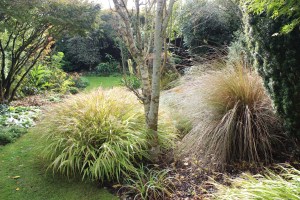
A few years passed and a suggestion was made which would change everything. Acknowledging Deborah’s thirst to expand, a neighbour proposed that she ask the farmer if he would sell her the field that abutted her property. He agreed and Deborah was suddenly the proud owner of an acre of virgin pasture.
Again, the first job was to provide shelter for the new garden and, as luck would have it, unused native trees saplings were going begging, excess from a local environmental planting project. And so, the planting of The Field began in earnest. Deborah’s horticultural circle of friends extended and her gaze turned towards rarer plants, curious as to which she could keep alive or would even thrive in these mild but tempestuous conditions. She began to open for the National Garden Scheme and for garden groups, the snowball of meeting knowledgeable people and the drive to learn never diminishing.
Then, sadly, things went awry. Deborah’s mother became ill and it was necessary for her to sell up and move to Devon to nurse her. It is not easy to leave your creation, especially one still in its infancy. All the while she was away, she wondered what was happening in her special garden. Five years passed, her wonderful mother had sadly died, and things took a curious turn. Deborah arranged with the new owner to visit the garden. With trepidation she ventured in.
And there was good news and bad news. The bad was that nothing had been done since she had left and the garden was thick with brambles. The good was that nothing had been done since she had been away and, with any luck, Deborah’s horticultural treasures were buried somewhere beneath the tangle.
Then came the second suggestion to change her life. “Why don’t you buy the house back?” her friends asked. With more than a little caution, she tentatively contacted the owner. And to Deborah’s great surprise, he agreed to sell.
Against all odds, she had reclaimed her garden, albeit looking quite different to how she had left it five years previously. She had also given herself a mountain of work. After three years of restoration and renewal Deborah says: “I feel like I’ve got it to where I want it”. And the result is quite special.
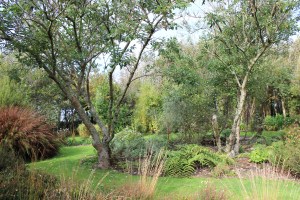
There are gardens that look outwards, borrowing landscape from beyond the boundaries, and there are those that look inwards. Buckshead garden is one such introverted plot. It is a garden of stolen views and winding paths, catching glimpses through trees of something to investigate in the distance or finding a treasure at your feet.
There are embracing layers of planting; a canopy of trees, a backbone of shrubs, all softened by herbaceous perennials and ground cover. Anyone who tells you can’t grow a tree in a lifetime should take note, many of the specimens were planted as saplings, others, such as the stand of eucalyptus, were grown from seed.
Deepest blue hydrangeas are an indication of the extent of the soil acidity. Tree heathers, camellias and rhododendrons also relish these conditions. Granite features are a dominant presence, with hulking boundary walls and elegant balustrades framing the courtyard to the front of the house, where a pair of fine stone greyhounds stand guard.
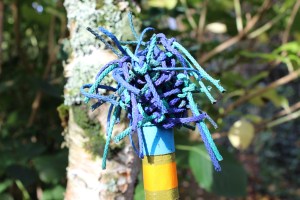
Throughout the garden there are colourful sculptures by Michael Whetman. These abstract forms are carefully placed, contrasting and complementing the planting. Once the wind makes an expected visit, the full animation of the garden is revealed with bamboos, grasses and kinetic sculptures adding yet another dimension.
This is not a formal garden, quite the contrary. It is relaxed and welcoming. Deborah’s little dog Mackie races around, digging up grubs in true terrier style, a cuter form of pest control I couldn’t imagine. Another pest however is out of Mackie’s league, more suited to a pack of wolves perhaps. Deborah has had to install a tall deer fence around the garden as nibbled casualties were becoming too frequent. She worries it is intrusive, but I found myself too intent on the beauty of the garden to notice it.
And this is where gardening and photography collided. Whilst teaching at the University, Deborah had the opportunity to undertake her own research project. What better subject than her own garden, initially to record progress but increasingly to try to capture the essence of the garden itself. As she explains: “Trying to represent what it actually feels like to be in a garden.” She began layering and dismantling images to create visual diversions, forcing the eye to move around the image.
There is no doubt that Deborah is an accomplished art photographer, having exhibited not only in this country but in the USA, Australia and Europe. She is also a gifted gardener. These two disciplines met, gently and effectively. The garden is influenced by a photographer’s eye, the photography influenced by the desire to share the essence of the garden.
The true worth of a garden is far beyond visual aesthetics, it is sound and smell and touch and taste and that other sense, spirit of place. Deborah’s photos help us to channel these senses and it is her garden creation that has become her artistic muse.
More information, including about Deborah’s book In Paradiso, is available at deborahfwbaker.com
The garden will be open throughout June, July and August on Friday afternoons for the National Garden Scheme.
Do you love visiting gardens? Why not try out our pick of the best gardens to visit by the sea this Summer.

